Lifesaver Interlock is a widely popular and trusted breathalyzer device that helps prevent drunk driving. It works by analyzing a person’s blood alcohol concentration (BAC) through their breath, and if the BAC exceeds the legal limit, it will disable the vehicle from starting.
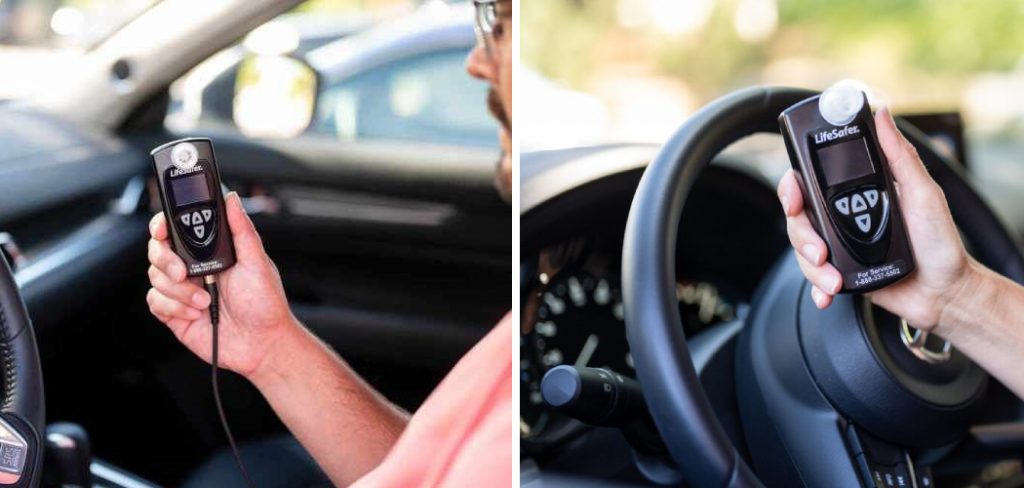
This article will guide you on how to use Lifesafer Interlock to ensure its effectiveness and accuracy. If you have been ordered by the court to install this device in your vehicle or consider it a safety precaution, this guide will provide you with all the necessary information. So, let’s get started!
Understanding the LifeSafer Interlock Device
Before we use Lifesafer Interlock, it’s essential to understand how the device works and its components. The device comprises a handheld unit that contains a mouthpiece, an alcohol sensor, and a display screen. It also includes wiring that connects the device to your vehicle’s ignition system.
The handheld unit is responsible for collecting and analyzing your breath sample, while the alcohol sensor measures the level of alcohol in it. The display screen shows your BAC readings and any instructions or alerts from the device. The wiring connects the handheld unit to your vehicle’s ignition system, allowing it to disable the vehicle if necessary.
Step-by-step Guidelines on How to Use Lifesafer Interlock
Step 1: Familiarize Yourself with the Device
The first step to using Lifesafer Interlock is to familiarize yourself with the device and its components. Ensure that you have read the user manual provided by the manufacturer thoroughly. It contains essential information on how to use the device, including troubleshooting tips. This step is crucial to ensure the device’s proper functioning and avoid any issues while using it.
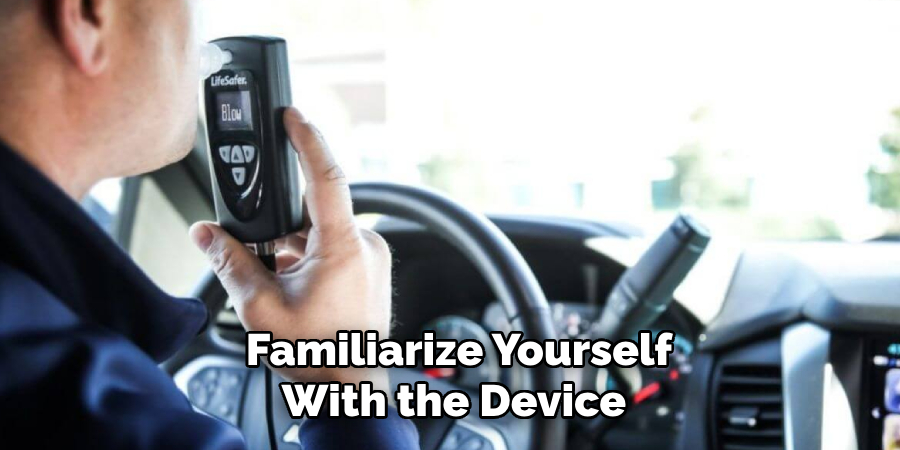
Step 2: Install the Device in Your Vehicle
The next step is to install Lifesafer Interlock in your vehicle. It’s recommended that you have a professional technician install the device for you, as it involves connecting the wiring to your vehicle’s ignition system.
They will also ensure that the device is properly calibrated and functioning correctly. While the installation process may vary slightly depending on your vehicle’s make and model, it typically involves connecting a few wires and mounting the handheld unit near the driver’s seat.
Step 3: Start Your Vehicle
Once the device is installed, you can start your vehicle as usual. If this is your first time using Lifesafer Interlock, you must provide a breath sample before starting the vehicle. The device will prompt you to blow into the mouthpiece and analyze your BAC level. Make sure to follow the instructions on the display screen and provide a deep breath sample.
Step 4: Take Periodic Breath Tests
While driving, the Lifesaver Interlock will prompt you for periodic breath tests. These tests are random and can occur every 5-15 minutes. When prompted, pull over safely and provide a breath sample as instructed. This feature ensures that you are continuously sober while driving. If you fail to provide a breath sample or your BAC exceeds the legal limit, the device will alert and disable your vehicle.
Step 5: Regular Scheduled Maintenance
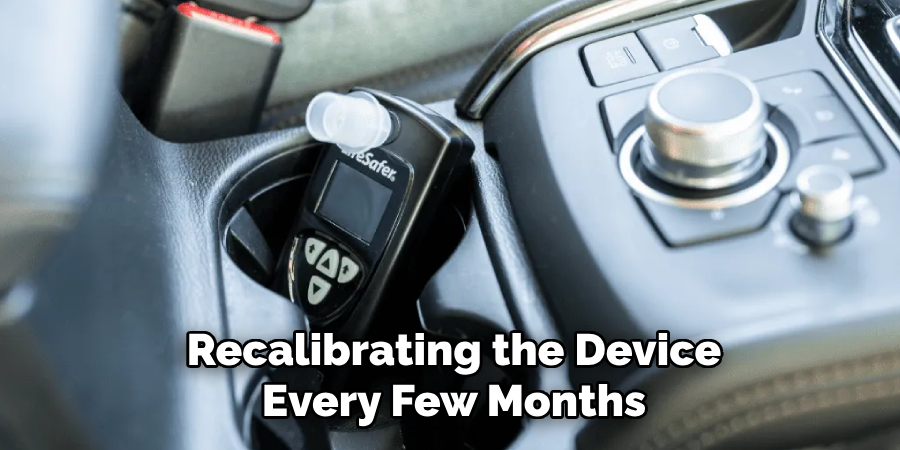
To ensure the device’s accuracy and proper functioning, it’s crucial to follow the recommended maintenance schedule provided by the manufacturer. This typically involves recalibrating the device every few months and replacing any worn-out parts. Failure to follow the maintenance schedule may result in inaccurate readings or device malfunctions.
Following these simple step-by-step guidelines will help you use Lifesafer Interlock effectively and ensure its accuracy in preventing drunk driving. Remember to always drink responsibly and never drive under the influence of alcohol. Stay safe!
Additional Tips and Tricks to Use Lifesaver Interlock
1. If you are driving on long trips, make sure to take frequent breaks and switch drivers if possible. This will help keep you alert and focused and allow the driver to rest and avoid fatigue.
2. When using Lifesaver Interlock, it is important to always have a backup plan in case of emergency situations. For example, if your vehicle’s battery dies, have a spare battery or charger on hand to ensure you can continue using the device.
3. Keep your Lifesaver Interlock clean and well-maintained. Regularly check for any signs of damage or malfunction and address them immediately. This will ensure the device is functioning properly and accurately detecting alcohol levels.
4. Familiarize yourself with your state’s laws and regulations regarding Lifesaver Interlock usage. Each state may have different requirements for installation, maintenance, and reporting. Stay informed to avoid any potential legal issues.
5. Remember that Lifesaver Interlock is not a substitute for responsible drinking habits or seeking help for alcohol addiction. Use the device as a tool to aid in your recovery journey, but also seek professional support and make healthy lifestyle changes.
6. Do not attempt to tamper with or remove the Lifesaver Interlock without proper authorization and instruction from your provider. Tampering with the device can result in legal consequences and jeopardize future usage.
7. Take advantage of any training or educational resources your Lifesaver Interlock provider provides. This can include tutorials, webinars, and support hotlines to ensure you use the device correctly and get the most out of it.
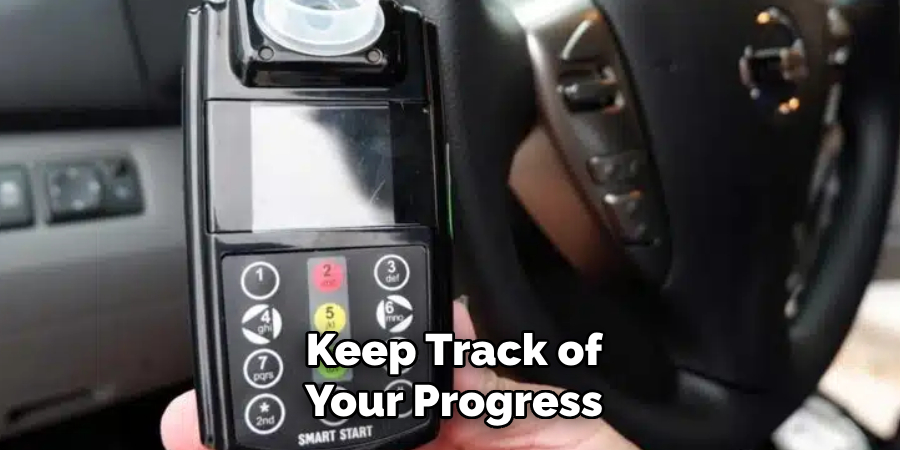
8. Keep track of your progress and use the data from the device to monitor your alcohol consumption patterns. This can help you identify and address any potential triggers or problem areas to improve your recovery journey.
9. Finally, always be honest and transparent about your Lifesaver Interlock usage. This will help you stay accountable and build trust with your loved ones and support system. Remember that seeking help and taking responsibility for your actions is a sign of strength, not weakness.
Following these tips and tricks can help you use Lifesaver Interlock effectively and safely as part of your recovery journey. Remember to always prioritize your well-being and make responsible choices for yourself and others on the road.
Recovery is a process, but with determination and support, it is achievable. Keep using your Lifesaver Interlock as a tool for a healthier and happier life. Keep pushing forward, and never give up!
Things You Should Consider to Use Lifesafer Interlock
1. Before getting a Lifesaver Interlock, you should research and learn about the device. This includes understanding how it works, its features, and any laws or regulations related to its use in your state.
2. Consider the cost of installing and maintaining a Lifesaver Interlock. While it may initially seem like an expensive investment, remember that it is a necessary tool for safe and legal driving.
3. Talk to your insurance company about the potential impact on your premiums if you install a Lifesaver Interlock. Sometimes, it may result in a discount or lower rates, which can help offset the cost.

4. Ensure you have a reliable and experienced technician install the device. Improper installation can lead to malfunctions and even false positives, so choosing a reputable company with trained technicians is important.
5. Familiarize yourself with the device’s operation before using it on the road. Most Lifesaver Interlocks come with detailed instructions and training materials but ensure you feel comfortable using them before getting behind the wheel.
6. Remember that using a Lifesaver Interlock means being responsible for any breath samples provided while driving. It is important to remain sober and avoid any substances that could cause false positives.
7. Plan ahead for maintenance appointments and ensure the device is calibrated regularly for accurate readings. Failure to do so can result in violations, fines, and even license suspension.
8. Be honest with yourself and others about your need for a Lifesaver Interlock. It may feel embarrassing or like an infringement on your privacy, but it is a necessary tool for safe driving and keeping yourself and others on the road safe.
9. Take advantage of the Lifesaver Interlock’s additional features, such as GPS tracking or remote monitoring options. These can provide added peace of mind and protection.
10. Lastly, remember that using a Lifesaver Interlock is not a punishment but rather a privilege to continue driving legally and safely. Embrace it as a necessary tool for your personal and public safety.
Following these considerations and using a Lifesaver Interlock responsibly can help make the roads safer for everyone. Remember to always prioritize safety and follow all laws and regulations related to driving with an interlock device. Proper use of a Lifesaver Interlock can be valuable in promoting responsible and sober driving behaviors.

Feel free to ask for support or guidance if you have questions or concerns about using a Lifesaver Interlock. Together, we can work towards creating safer roads for everyone. So, make the right choice and consider using a Lifesaver Interlock for your safety and the safety of those around you. Stay informed and stay responsible on the road!
Troubleshooting Common Issues to Install Lifesaver Interlock
1. Device Not Recognized by Computer:
One of the most common issues users face is that the computer does not recognize their device when they connect it to install Lifesaver Interlock. This can be due to several reasons, such as faulty USB ports, outdated drivers, or a malfunctioning device.
To troubleshoot this issue, connect your device to a different USB port on your computer. If that doesn’t work, make sure that your drivers are up to date. You can check for updates through your device manager or by visiting the manufacturer’s website.
If the issue persists, your device may be malfunctioning. In this case, you should contact the manufacturer or seek professional help to resolve the issue.
2. Error Messages during Installation:
Another common issue while installing Lifesaver Interlock is encountering error messages during installation. Various factors, such as incorrect installation files, insufficient disk space, or conflicting software, can cause these errors.

To troubleshoot this issue, ensure you have downloaded the correct installation files from a reliable source and that your computer has enough free disk space to complete the installation process.
If you still get error messages, disable any conflicting software or antivirus that may interfere with the installation. You can also try running the installation as an administrator.
3. Device Not Functioning Properly after Installation:
In some cases, users may successfully install Lifesaver Interlock but face issues with device functionality afterward. This could be due to incorrect wiring, faulty hardware, or a malfunctioning device.
To troubleshoot this issue, ensure your device is wired correctly according to the manufacturer’s instructions. If the wiring is correct and the issue persists, it may indicate a faulty hardware component. In this case, you should contact the manufacturer or seek professional help to resolve the issue.
4. Software Compatibility Issues:
Lifesaver Interlock may not be compatible with certain operating systems or versions, causing installation issues. To avoid this, make sure to check the compatibility requirements before attempting to install the software.
If you encounter compatibility issues during installation, try running the software in compatibility mode. If that doesn’t work, consider updating your operating system or contacting the manufacturer for assistance.
Following these troubleshooting tips can help resolve common issues while installing Lifesaver Interlock. If you continue to face problems, it is best to seek professional help or contact the manufacturer for further assistance.
Maintenance Tips for Lifesafer Interlock
1. Follow the Manufacturer’s Instructions:

The first and most important maintenance tip is to follow the manufacturer’s instructions for using, cleaning, and maintaining your lifesaver interlock device. These instructions will vary depending on your specific model, so be sure to read and understand the manual before using the device. This will ensure that your device functions properly and that you avoid any potential issues or malfunctions.
2. Clean the Device Regularly:
It is important to clean your life with a safer interlock device on a regular basis. This includes both the mouthpiece and the exterior of the device. Use a soft cloth or cotton swab with mild soap and water to gently clean these areas. Do not use harsh chemicals or abrasive materials, as they can damage the device. This will help prevent any buildup of dirt, debris, or alcohol residue, which can affect the device’s accuracy.
3. Keep the Device Dry:
Moisture can also affect the accuracy and functionality of your lifesaver interlock device. Be sure to always keep it dry, especially after cleaning or using it in wet weather conditions. If moisture does get inside the device, gently shake it out and allow it to air dry completely before using it again. This will prevent any potential errors or malfunctions.
4. Avoid Tampering with the Device:
It may be tempting to tamper with your lifesaver interlock device in an attempt to cheat the system, but this can have serious consequences. Not only is it illegal, but it can also damage the device and make it unusable. Additionally, attempts to tamper with the device will be recorded and reported to your monitoring agency, which can result in legal repercussions.
5. Schedule Regular Calibration:
Lifesaver interlock devices must be calibrated regularly to ensure their accuracy. It is important to follow the manufacturer’s recommended calibration schedule, which is typically every 30-60 days. This will also ensure that the device meets any state or legal requirements. Failure to calibrate the device may result in inaccurate readings and potential violations.
6. Report Any Issues Immediately:
If you experience any issues or malfunctions with your lifesaver interlock device, it is important to report them immediately to your monitoring agency. Do not attempt to fix the issue yourself or continue using the device if it is malfunctioning. Your monitoring agency will provide instructions on what to do and may schedule a maintenance check or replace the device if necessary.
Following these maintenance tips will help ensure your lifesaver interlock device’s proper functioning and accuracy. It is important to always follow the instructions provided by the manufacturer and report any issues immediately to avoid potential violations or legal consequences.
By properly maintaining your device, you can continue using it as a safe and reliable tool for sober driving. Remember, safe driving saves lives. So, always drive sober and use your lifesaver interlock device responsibly. Together, we can make our roads safer for everyone. Stay safe!
Frequently Asked Questions
What is a Lifesaver Interlock?
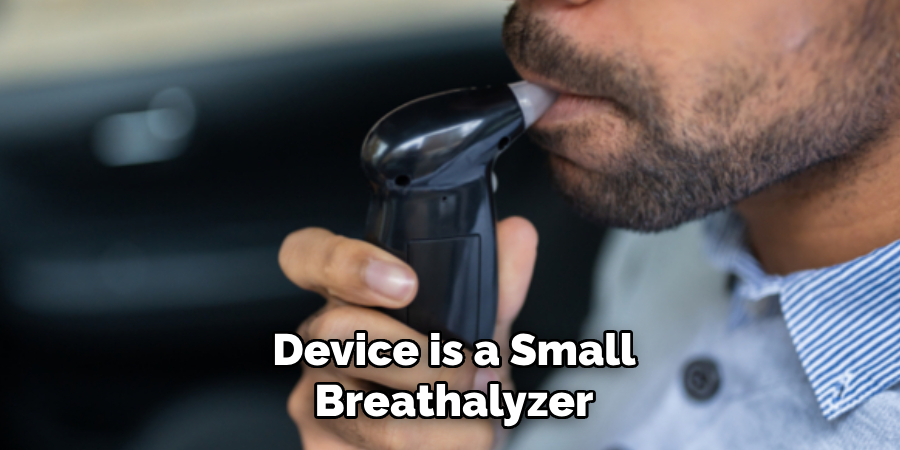
The Lifesafer interlock device is a small breathalyzer that is installed in your vehicle. It is designed to prevent drivers from operating their vehicles while under the influence of alcohol. The device works by measuring the driver’s breath alcohol concentration (BrAC) and preventing the car from starting if it detects a reading above the programmed limit.
How Do I Use the Lifesaver Interlock?
Using the Lifesafer interlock is simple and straightforward. Once installed in your vehicle, you must blow into the device before starting your car. If it detects a BrAC above the programmed limit, the car will not start.
You may also be required to take random retests while driving to ensure that you are not consuming alcohol while operating the vehicle. An alarm will sound if a retest is missed or failed, and the car may lock temporarily.
How Do I Maintain the Lifesaver Interlock?
Regular maintenance of your lifesafer interlock device is essential for its proper functioning. You should follow any specific instructions provided by the manufacturer or your service provider for cleaning and maintaining the device. As recommended by your service provider, it is also crucial to have the device calibrated regularly to ensure accurate readings.
Can I Remove the Lifesaver Interlock Device After My Obligation Period?
In most cases, you must keep the life-safe interlock device installed in your vehicle for the entire duration of your court-ordered obligation. Removing the device before this time may result in legal consequences and can also extend your obligation period. Once you have completed your obligation, your service provider will schedule a removal appointment for the device.
Conclusion
Now you know how to use lifesafer interlock and what to expect while using it. Remember, using the device properly and maintaining it regularly is crucial for its accurate functioning. Following all laws and regulations regarding interlock devices in your state or country is also essential.
Contact your service provider for assistance if you have any further questions or concerns. Stay safe and drive responsibly with a lifesaver interlock. Thank you for choosing us to help keep our roads safe! Happy driving!
About
Safety Fic is a distinguished figure in the world of Diy design, with a decade of expertise creating innovative and sustainable Diy solutions. His professional focus lies in merging traditional craftsmanship with modern manufacturing techniques, fostering designs that are both practical and environmentally conscious. As the author of diy, Safety Fic delves into the art and science of Safety Fic-making, inspiring artisans and industry professionals alike.
Education RMIT University
(Melbourne, Australia) Associate Degree in Design (Safety Fic) Focus on sustainable design, industry-driven projects, and practical craftsmanship. Gained hands-on experience with traditional and digital manufacturing tools, such as CAD and CNC software.
Nottingham Trent University
(United Kingdom) Bachelor’s in diyfastly.com and Product Design (Honors) Specialized in product design with a focus on blending creativity with production techniques. Participated in industry projects, working with companies like John Lewis and Vitsoe to gain real-world insights.
Publications and Impact
In diy, Safety Fic his insights on indoor design processes, materials, and strategies for efficient production. His writing bridges the gap between artisan knowledge and modern industry needs, making it a must-read for both budding designers and seasoned professionals.
